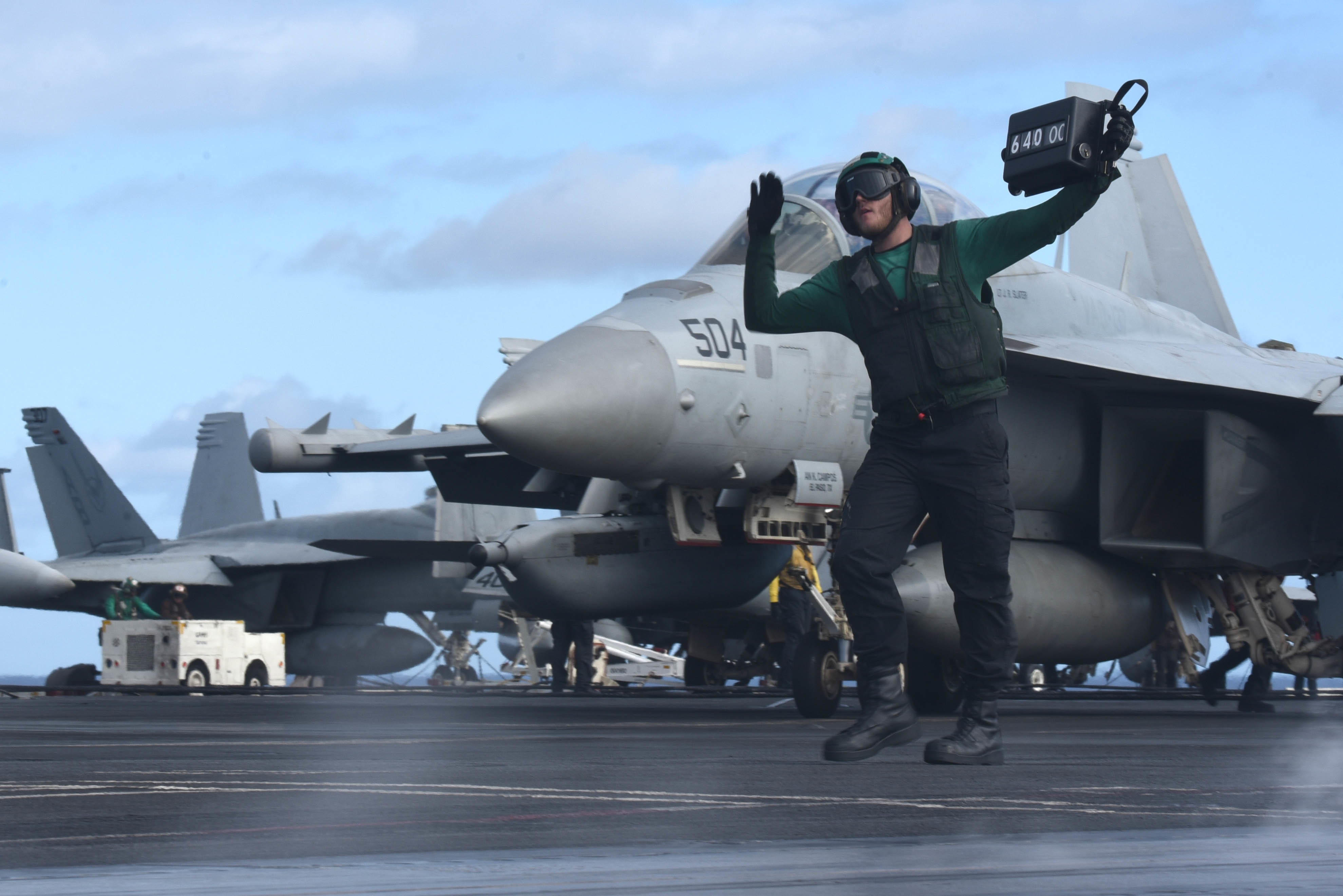
NATIONAL HARBOR, Md. – Boeing is developing upgrades to the Navy’s existing EA-18G Growler fleet to quickly deliver a Block II electronic warfare aircraft with improved sensor capabilities and more efficient fuel tanks.
Boeing plans to have system functional requirements for the Growler Block II upgrades by the end of the year, Jennifer Tebo, Boeing’s director of development for the F-18 Super Hornet. Tebo spoke about the Growler upgrades Tuesday at the 2019 Sea-Air-Space expo.
“The thinking of Growler at this time is that it’s a retrofit program to deliver capability in the 2025-time frame,” Tebo told USNI News.
To deliver new capabilities to the Navy faster, the service opted to have its existing Growler fleet brought in for upgrades, which will incorporate new sensors and some of the Super Hornet Block III upgrades — like conformal fuel tanks.
The Growler is a variant of Boeing’s F-18F Super Hornet. The aircraft provides tactical jamming and electronic protection to the carrier air wing.
Boeing is installing the conformal fuel tanks behind the cockpit. The conformal tanks hold slightly less fuel than external tanks, however, in the case of the Super Hornets, the conformal tanks are lighter and make the jets more aerodynamic, resulting in an increased range of about 129 nautical miles, Boeing officials previously stated.
The Growler’s sensors upgrades will do some of the analysis work previously done by pilots, enabling the pilots to process data more efficiently, Tebo said.
“It’s about bringing in all this data and taking the workload off the pilots,” Tebo said of the Block II upgrades. “As they get data, data, data, what do they do with that? So we’re giving them decision aids and tools in the cockpit. The system will be dynamic and adaptive, able to process large amounts of data but also be easily upgradeable in the future as threats change. Over the life of the aircraft, Tebo said the Navy would be able to upgrade the sensors systems rapidly.
“We know the threats are evolving fast, so we need to keep pace, and that is a key point of Growler Block II,” Tebo said.





